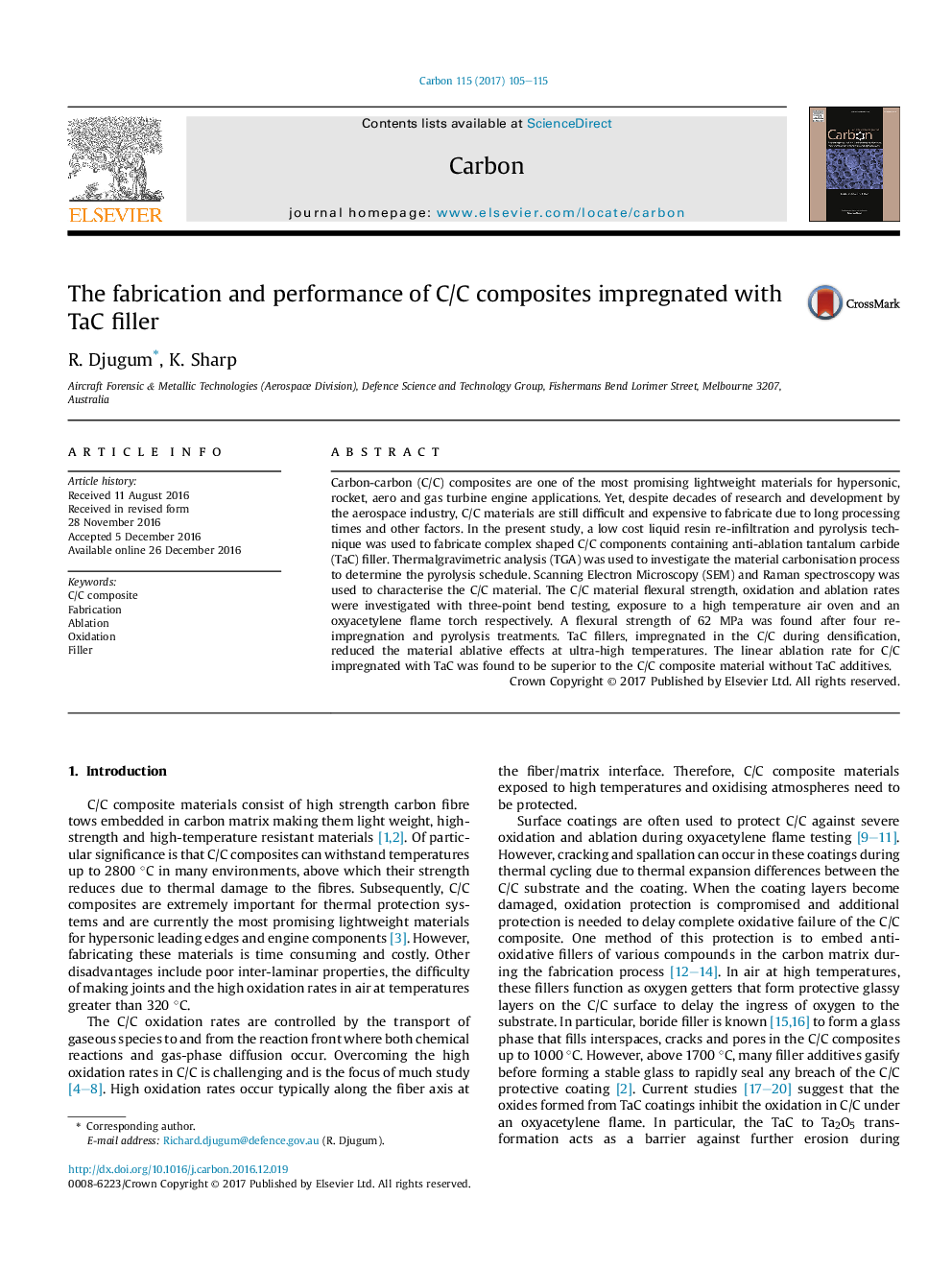| Article ID | Journal | Published Year | Pages | File Type |
|---|---|---|---|---|
| 5432255 | Carbon | 2017 | 11 Pages |
Carbon-carbon (C/C) composites are one of the most promising lightweight materials for hypersonic, rocket, aero and gas turbine engine applications. Yet, despite decades of research and development by the aerospace industry, C/C materials are still difficult and expensive to fabricate due to long processing times and other factors. In the present study, a low cost liquid resin re-infiltration and pyrolysis technique was used to fabricate complex shaped C/C components containing anti-ablation tantalum carbide (TaC) filler. Thermalgravimetric analysis (TGA) was used to investigate the material carbonisation process to determine the pyrolysis schedule. Scanning Electron Microscopy (SEM) and Raman spectroscopy was used to characterise the C/C material. The C/C material flexural strength, oxidation and ablation rates were investigated with three-point bend testing, exposure to a high temperature air oven and an oxyacetylene flame torch respectively. A flexural strength of 62Â MPa was found after four re-impregnation and pyrolysis treatments. TaC fillers, impregnated in the C/C during densification, reduced the material ablative effects at ultra-high temperatures. The linear ablation rate for C/C impregnated with TaC was found to be superior to the C/C composite material without TaC additives.
Graphical abstractDownload high-res image (371KB)Download full-size image
